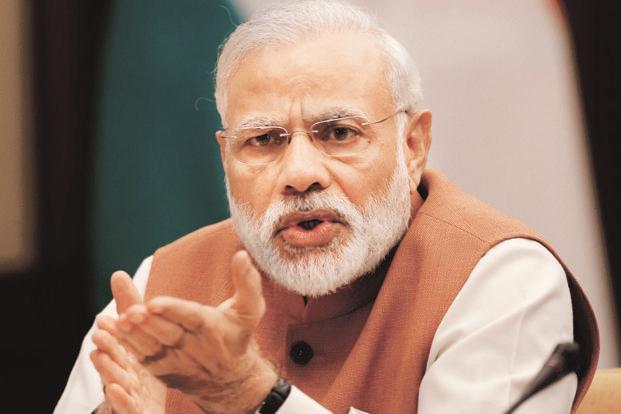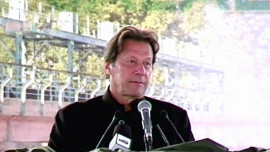
Just when the world had accepted India’s succumbing to the pressures of the Rashtriya Swayamsevak Sangh (RSS) to become a majoritarian state on the back of the Hindutva project, the spark of secularism in the fibre and sinew of India’s youth ignited and slammed Modi’s administration with a warning that India’s 200 million Muslims are as much part of the republic as the 80% Hindus.
From calling minorities — especially the Bangladeshi Muslims — termites and vowing to throw them into the Bay of Bengal, the Indian Home Minister, Amit Shah, had overseen the crafting of a troubling series of actions to servile the identification of “illegal residents” in India.
It began with the National Register of Citizens (NRC) proposal that was launched in Assam, which is India’s second-largest Muslim state after Kashmir. The NRC demanded the 33 million residents of the state to prove their Indian citizenship through authentic documentation — ta tall task that eventually led to the exclusion of 1.9 million people as non-Indian residents. Just as this large number of people was rendered stateless, the Modi administration began building detention camps. If that wasn’t enough to set the alarm bell, another project linked to the identification of citizens, the National Population Register was launched to gather demographic and biometric particulars. Following this there came another controversial statute, again linked to the identification of citizens, the Citizenship Amendment Act (CAA).
If the purpose of the earlier citizen identification proposals was to purge India of illegal residents, the aim behind the CAA was to facilitate Hindus, Sikhs, and Buddhists facing persecution as minorities in Afghanistan, Pakistan and Bangladesh to settle in India. As soon as the bill was passed by the Indian Parliament a backlash erupted all over the country that soon engulfed its youth in universities. The protests had smashed the walls of silence that had protected Modi’s divisive policies for so long and had lent a tacit approval to trolling, legal harassment and vigilante justice.
Muslims have been in the crosshair of both Modi and Amit Shah ever since the duo got together in Gujarat — the former as its chief minister and the latter as its home minister. Both Shah and Modi were implicated in the anti-Muslims riots that killed over 1,000 Muslims. Shah was arrested and charged with extrajudicial killings while Modi was accused of sanctioning the violence. However, neither of them could be convicted and they rose to assume even larger roles in Indian politics.
Emboldened by their past acts and the inability of the fractious regional political parties to rally support against the Bharatiya Janata Party’s (BJP) incremental steps to turn India into a Hindutva or “Hindu” state, Modi took his poll-sweeping victory in the 2019 election as a clarion call from the Indians to move India away from secularism to a nation of supremacists, where the fate of the minorities would depend on the goodwill of the majority.
That was not to be. If the recent protests, led by university students are any guide, the message drawn home to Modi is that his divisive policies are unacceptable. To make matters worse, the police were given a free hand to stage a massive crackdown against the protesting students. Little did Modi know that this would completely shatter his hope. The outpouring of anger spread from Modi’s constituency, Varanasi, a holy Hindu city, to India’s northeastern borderland to the heart of the Hindu Cow belt — Utter Pradesh — jolted both India and Modi.
The banners raised in the demonstrations were not merely about CAA. It was about Modi’s attempt to change India’s secular base. “Shut down fascism, not the internet,” read one banner. Another equated Modi’s action with that of Hitler’s, “Jab Hindu Muslim Razi, tau kya kerayga Nazi?” (When Hindi and Muslims agree, what can the Nazis do?). In yet another banner, the BJP’s electoral symbol, the lotus was displayed alongside the Swastika symbol.
Keeping to its habit of clampdown, the BJP administration brutalised students, shut down internet and arrested scores. More than 20 people have been killed including a nine-year-old boy who was crushed to death in a stampede set off by the police. The demonstration is about and from everyone — Muslims, students, left-leaning professionals and lower and upper-caste Hindus.
Modi is also struggling to keep his international image from falling apart. Western newspapers have started calling Modi an authoritarian Hindu nationalist leader rather than an economic reformer, and someone who has failed to deliver on the promised economic miracles, leading to the rising unemployment and inflation in India.
From economic reformer to hate-monger, Modi’s five and a half years’ journey into power is a travesty of justice. Throughout, in a blatant disregard for inclusivity that forms the bedrock of any democracy, Muslims were pushed to the wall. First by banning on July 23, 2019, a form of divorce permitted in the Muslim Personal Law. Later, on August 5, 2019, the government unilaterally stripped the autonomous status of Jammu and Kashmir and imposed curfew which is still in place. On November 9, 2019, the Indian Supreme Court gave the verdict on the Babri Masjid case in favour of Hindus. Other than scattered protests and muted responses, none of these actions elicited a reaction amounting to massive protests. The CAA, however, proved to be the last straw to break the proverbial camel’s back.
This sudden twist in the story will not be easy to ignore by simply calling the backlash from the civil society as the grievance of self-loathing liberals and hopeless cosmopolitans. Instead of empathising with those killed during the protests, Modi called the demonstrations a conspiracy by the opposition parties. To further fortify his image of a leader who thrives on controversy, he said, “The more they hate me, the more the love of this country’s public rains on me.”
In the wake of this new development, Kapil Komireddi, the author of Malevolent Republic: A Short History of the New India had this to say about Modi’s administration: “In 2014 India was the first democratic country to succumb to this wave of populism. And now India will be the first country that will show the way to reclaim democracy from the clutches of these thugs.”
Published in The Express Tribune, December 27th, 2019.
Like Opinion & Editorial on Facebook, follow @ETOpEd on Twitter to receive all updates on all our daily pieces.
































































COMMENTS
Comments are moderated and generally will be posted if they are on-topic and not abusive.
For more information, please see our Comments FAQ